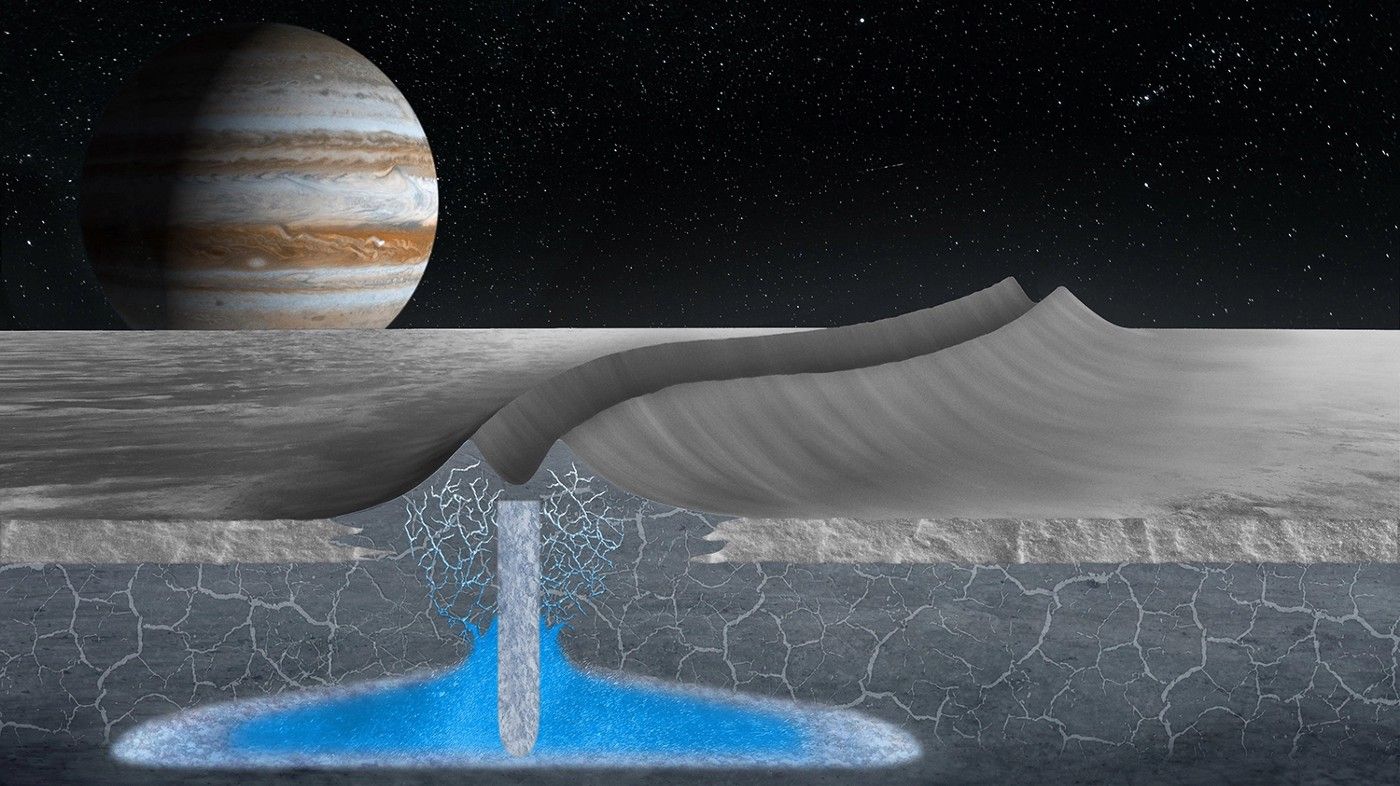Ice-penetrating radar observations of “double-ridge” features in the Greenland Ice Sheet match similar features found on Jupiter’s moon, Europa.

By Beth Johnson
While Io is a volcanic and lava-covered little world, Europa is known as an icy world. It’s another of Jupiter’s Galilean moons, and it’s considered a potential location for life beyond Earth. As such, scientists are always looking for the why of how the ice shell formed, how it cracked, why there are cryogenic geysers, and if any or all of that could contribute to suitable conditions for harboring life.
Since we haven’t (yet) sent a mission directly to Europa — and I won’t talk about upcoming, not-yet-launched missions — we have to look to Earth analogs for clues about the workings of ice on that distant moon. And scientists think they may have found one clue in ice-penetrating radar observations of “double ridge” features in the Greenland Ice Sheet, and their results were published in Nature Communications.
These ridges were not expected, and they’re considered a minor feature here on Earth, but on Europa, they streak the moon. Senior author Dustin Schroeder noted: We were working on something totally different related to climate change and its impact on the surface of Greenland when we saw these tiny double ridges — and we were able to see the ridges go from ‘not formed’ to ‘formed.’
In Greenland, enough data was collected that researchers observed the formation of a double ridge that occurred, and here I quote from the press release: …when the ice fractured around a pocket of pressurized liquid water that was refreezing inside of the ice sheet, causing two peaks to rise into the distinct shape.
Lead author Riley Culberg explains: In Greenland, this double ridge formed in a place where water from surface lakes and streams frequently drains into the near-surface and refreezes. One way that similar shallow water pockets could form on Europa might be through water from the subsurface ocean being forced up into the ice shell through fractures — and that would suggest there could be a reasonable amount of exchange happening inside of the ice shell.
And when we say “exchange”, we’re talking about how nutrients from impacts could accumulate on the surface and then end up in the subsurface ocean. This all means that the ice shell has quite a few dynamic processes than lend themselves to habitability.
Space whales, anyone?
More Information
Stanford University press release
“Double ridge formation over shallow water sills on Jupiter’s moon Europa,” Riley Culberg, Dustin M. Schroeder, and Gregor Steinbrügge, 2022 April 19, Nature Communications
This story was written for the Daily Space podcast/YouTube series. Want more news from myself, Dr. Pamela Gay, and Erik Madaus? Check out DailySpace.org.
This article was originally published by Beth Johnson on medium.com.





